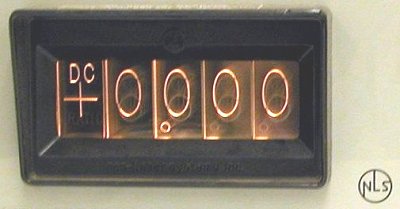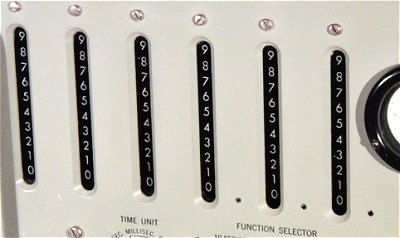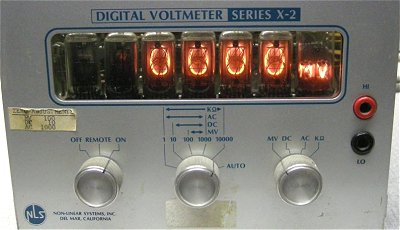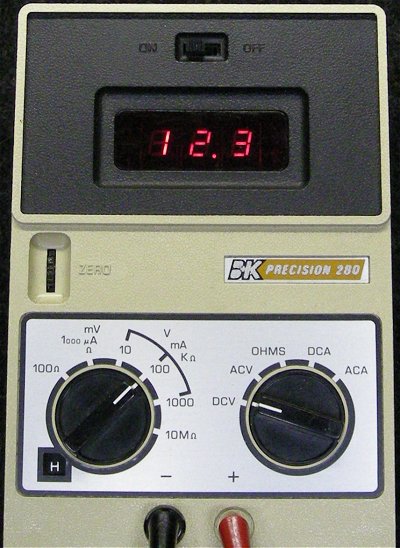BY STEVE JOHNSON ()
From the early days of electronic design and servicing, engineers and technicians relied mostly on analog meters for measuring voltage, current, frequency, wattage, and most other needed measurements. Analog meters using a single needle usually had at least one scale and many had multiple range scales that required the technician to not only interpret the correct value, but also read correct scale for the range setting. This sometimes led to incorrect readings, especially if the operator was inexperienced. If a technician was not careful, choosing the wrong range could not only give incorrect data, but could also easily peg the meter's needle to either end of the scale and damage or destroy the meter's movement. Although you can still find analog meters in many test environments and on hobby benches, the readouts on much of today's test equipment use some form of digital display or readout.
In 1952, an engineer named Andrew Kay started a company in Southern California named Non-Linear Systems (NLS). The following year Non-Linear Systems sold the first voltmeter with a digital display.

Non-Linear Systems digital display.
This first digital voltmeter's display was four digits and consisted of five sections. Four sections contained eleven clear plates with a single digit from 0 to 9 or a decimal point engraved in it. The left-most section of the display contained a “+” and “-” sign to show polarity of the reading. The plate containing the correct digit in each section was lit by a small incandescent lamp located at the top of the plate. This type of early display became known as an edge-lit display. Lamp failure was common under constant use, but the meter and case were designed with easy access to enable replacement of the lamps quickly on the bench or in the field.
This new digital meter with auto ranging and auto polarity utilized a resistor divider network and mechanical relays. If you see one of these operating you will hear a lot of clicking as the relays select the proper digits. NLS meters used this first type of digital display on many of their successive models.
Today NLS meters with this first type of digital display are hard to find. At auction they tend to sell for well over $300 in almost any condition. Since today's digital meters offer higher accuracy and many more features at a fraction of the price, these early Non-Linear Systems digital meters are most likely being purchased by collectors.

Early Hewlett-Packard digital display.
Even though Hewlett-Packard was one of the top names in test equipment at the time and many times larger in both engineering and manufacturing facilities, and sales, the company did not enter the digital display test equipment market until a few years after Non-Linear Systems. One of HP's early digital displays was used on its frequency counters. Instead of clear digits aligned one behind the other and read evenly from left to right, HP's display showed the digits in vertical columns and lit the appropriate digit in each column. This type of vertical display was not used for long, because shortly the “nixie” vacuum tube became the overall preference for digital displays, replacing pretty much all its predecessors.

An NLS multi-meter with a nixie tube digital display.
Although the inventors and dates of the origin of the nixie tube are controversial, a patent was filed on May 9, 1934 (patent # 2,142,106) by Hans P. Boswau of Galion, OH, describing the operation of a vacuum tube and its multiple cathodes each in the shape of a number that could be used to display any one of its digits from 0 through 9 when voltage is applied. In the mid 1950s, Burroughs Corporation purchased the rights for production and began widespread use of “nixies” in its line of electronic calculators. By the early 1960s, nixie tubes had found their way into many brands of test equipment.
The name nixie tube supposedly derives its name from is the abbreviation of “Numerical Indicator Experimental No.1,” which on the drawings was shortened to “NIX 1.” Engineers reading the abbreviation began to call the tube “nixie” and it is still the common name for the tube to this day.
Nixie tube displays do not just contain numbers (but they are by far the most common). Some may also display fractions, AC, DC, MV, +, -, and almost any other short notation needed in a digital display.

A pair of common nixie tubes.
There are many versions of nixie tubes. Some read from the side and still others read from the top. Most have several pins to supply power to each cathode and need a nonstandard vacuum tube socket. The majority operate between 170 and 180 Vdc, but always check the datasheet for each particular type.
Today almost any equipment that contains nixie tubes has value. Nixie tubes themselves have increased in value mostly due to the current popularity of nixie tube clock kits. Several companies now offer kits to build clocks with both enclosed and exposed nixie tubes as the digital display of the time. Most of the common nixies used in these kits are now being manufactured in Russia and are available for use in these kits, but the popularity of vintage nixie tubes has increased as well. It is not uncommon to see nixie tubes originally manufactured in the U.S. sell online for between $12 and $25 or sometimes more, depending on the type and if they are used or new old stock. Just about any multimeter with a nixie tube display is sought after by test equipment collectors who now have to compete with hobbyists and clock builders for the limited supply of vintage nixie tubes.

The LED display replaced the nixie tube- early 1970s.
In the early 1970s, light-emitting-diode (LED) displays replaced the nixie tube. Using lower voltage, less current, generating little or no heat, and being less costly to manufacture, the LED quickly replaced the nixie's use in almost everything. By the end of the 1970s, liquid-crystal displays (LCDs) had done to the LED what the LED had done to the nixie tube. LCD displays have had a long run, but today even they are being quickly replaced by processor-controlled touchscreens that can both be the controls and display digital and analog images simultaneously.
For more information and examples of early electronic technology view my collection at StevesAntiqueTechnology.com.
Advertisement
Learn more about Electronic Products Magazine





